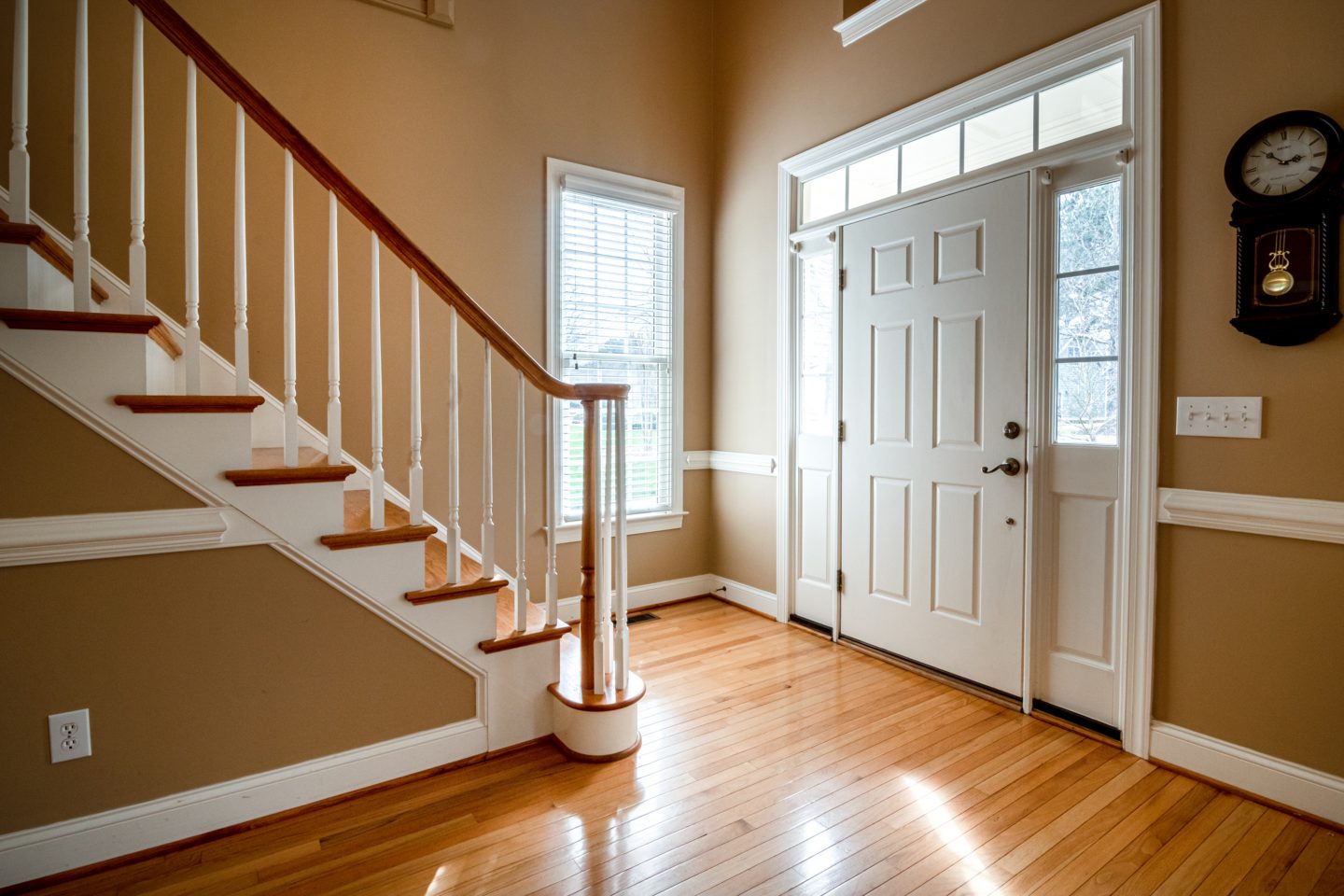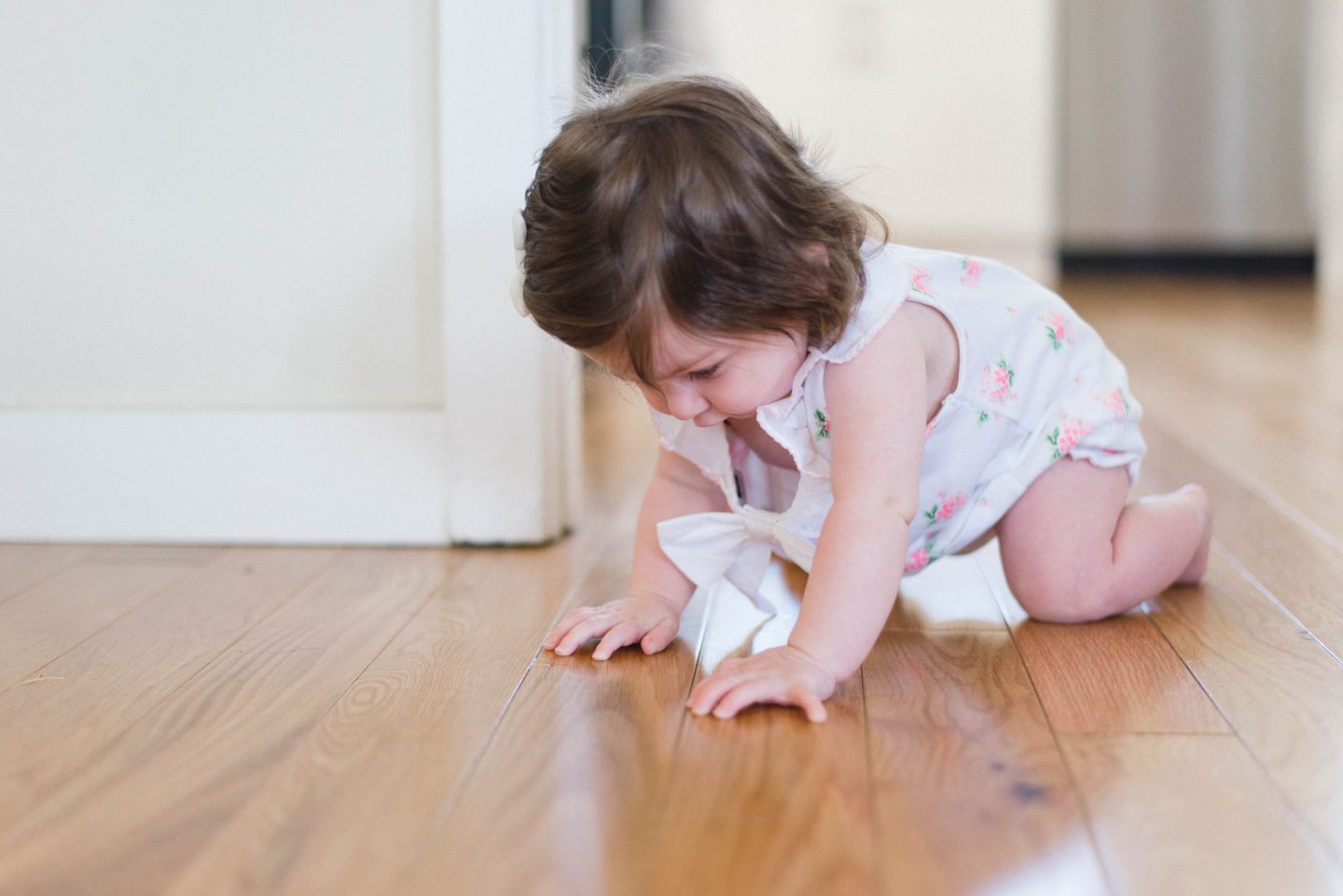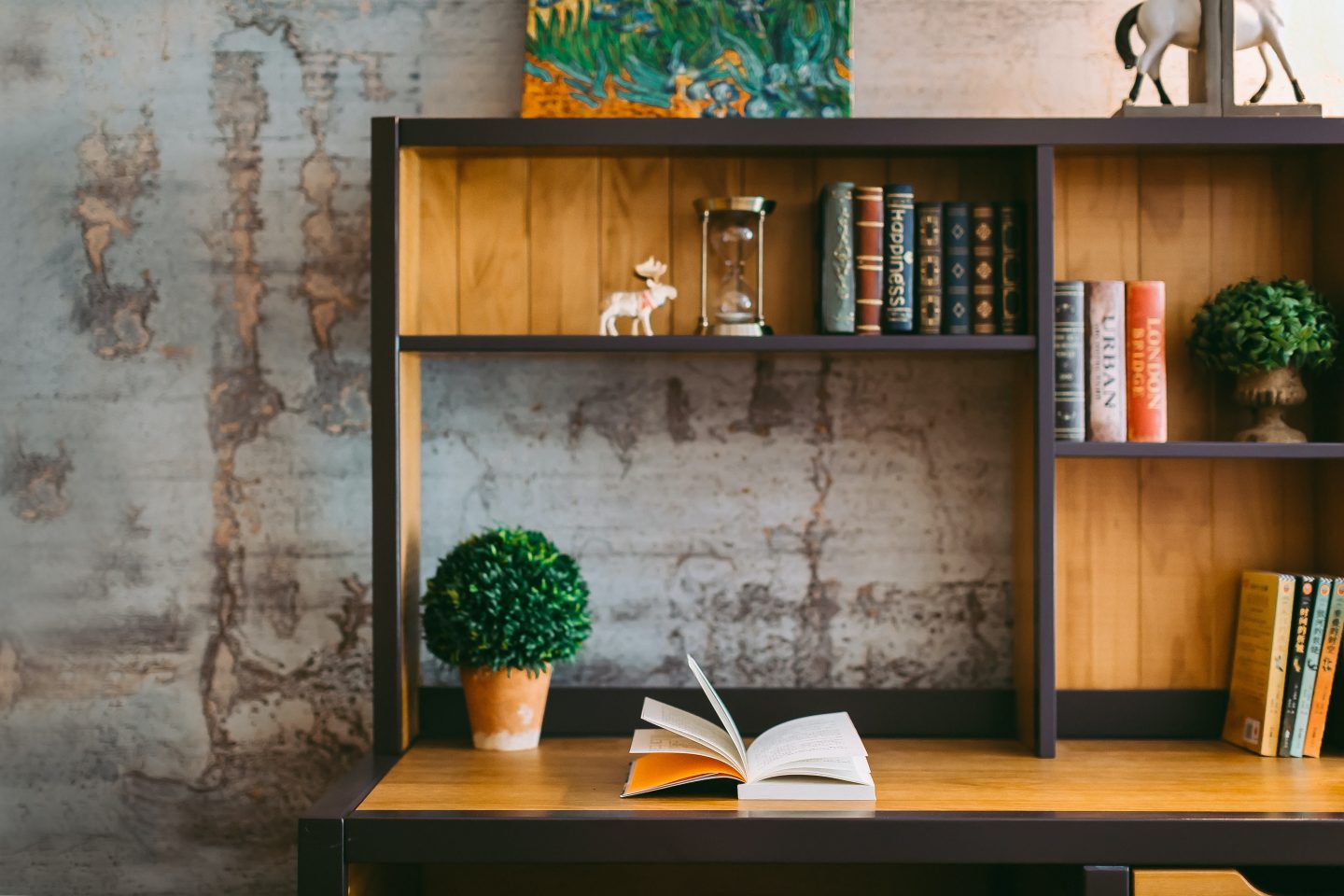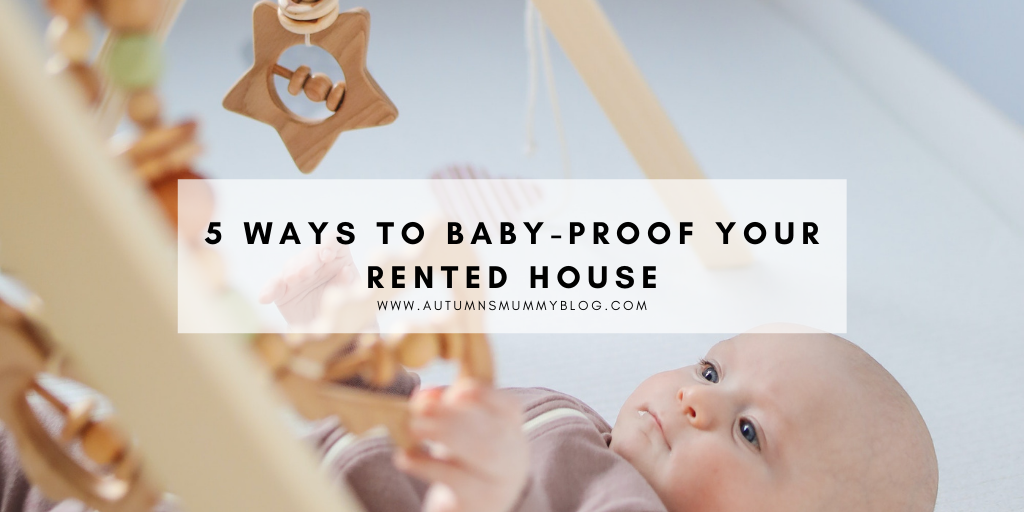Collaborative Post¦ With only 6 weeks to go until my due date, it won’t be very long before I’m thinking about baby-proofing my home again! Every house or flat contains potential dangers that you need to protect your baby from. However, in a rented house it can be a bit more of a challenge to baby-proof things. After all, you don’t want to risk losing your deposit by making any permanent changes. As such, you’ll need to speak to your landlord before making any holes in walls!
1. Stairs
Stair gates are incredibly important in helping to prevent accidents on the stairs. The last thing you want is for your baby to take a tumble down them. You can get pressure mounted stair gates which don’t require any holes to be made in walls. Instead, discs on either side of the gate screw out to hold the gate against the wall.
These are also ideal for keeping your baby out of other potentially hazardous rooms such as the kitchen or utility room. However, pressure mounted stair gates aren’t a good idea for the top of the stairs. This is due to the risk that pressure applied to it could cause it to fall through.
Therefore, for the top of the stairs it would definitely be a good idea to talk to your landlord. Hopefully they have landlord insurance in case of any accidental or malicious damage. If they’re not keen on you drilling, you may be able to come to some sort of compromise such as making repairs before you move out of the property. (If you’re reading this from a landlord’s perspective, you should compare landlord insurance to cover yourself in case of any accidental or malicious damage which could potentially arise from such situations).

2. Windows
As well as being a fall risk, it would be so easy for tiny fingers to get caught in windows. You can buy restrictors that stop windows from opening far enough for a child to fall out. These don’t usually require any drilling. Try to ensure there’s no furniture or anything that they can easily climb up to gain access to the window.
3. Blinds and curtains
The cords on blinds and curtains are dangerous for obvious reasons. Install ones without cords if you can, or install a cord tidy to make sure they’re safe. The one I bought for my daughter’s room came with a sticky pad option as well as having screw holes.
3. Sockets
Plug sockets are obviously something you can’t move out of harms way. They’re right in the reach of crawling babies! Advice used to be to use plastic socket protectors which plugged into them. However, these are not actually effective as they are easy for young children to remove. In fact, they may actually be more dangerous than leaving the socket exposed.
The way sockets are designed these days should mean that even if your child managed to put their finger into a socket, they shouldn’t touch live wires. If you’re not sure they’re up to modern safety standards, have a chat with your landlord. One of their responsibilities to tenants is to make sure that the electricals in your property are safe.
On a side note, make sure you don’t leave any electronics near plug sockets that young children may be curious about and attempt to plug in. It’s amazing how fast children seem to be able to do things while your back is turned for a split second. The last thing you want is for them to successfully plug in your hair straighteners while you pop out of the room for a moment.

4. Cupboards
It’s a good idea to use catches on cupboard doors to prevent small hands from opening them and getting caught. Many of these are foam with sticky pads, so won’t cause any damage. Not only that, but it will stop them from helping themselves to toxic products or choking hazards!
5. Furniture
Be wary of any sharp corners on furniture or hearths. You can get plastic corner protectors so that if your child knocks into them, they only get a soft bump rather than a nasty cut.
It’s also worth noting that furniture should be secured to a wall if possible to prevent it from toppling over. Again, you will need to speak to your landlord to see if it can be screwed to a wall. If not, it would be a good idea to seek out alternate furniture solutions. Young children often use furniture to pull themselves up, so it is very risky if furniture isn’t secured as it should be.

Hopefully these tips will help you to keep your little one safe and have given you more confidence in how to do this in a rented property.
Disclosure: This is a collaborative post.
